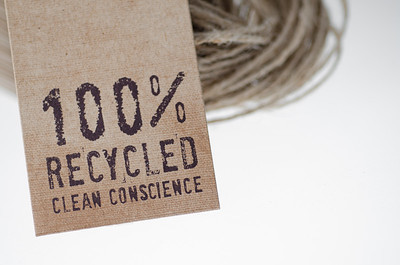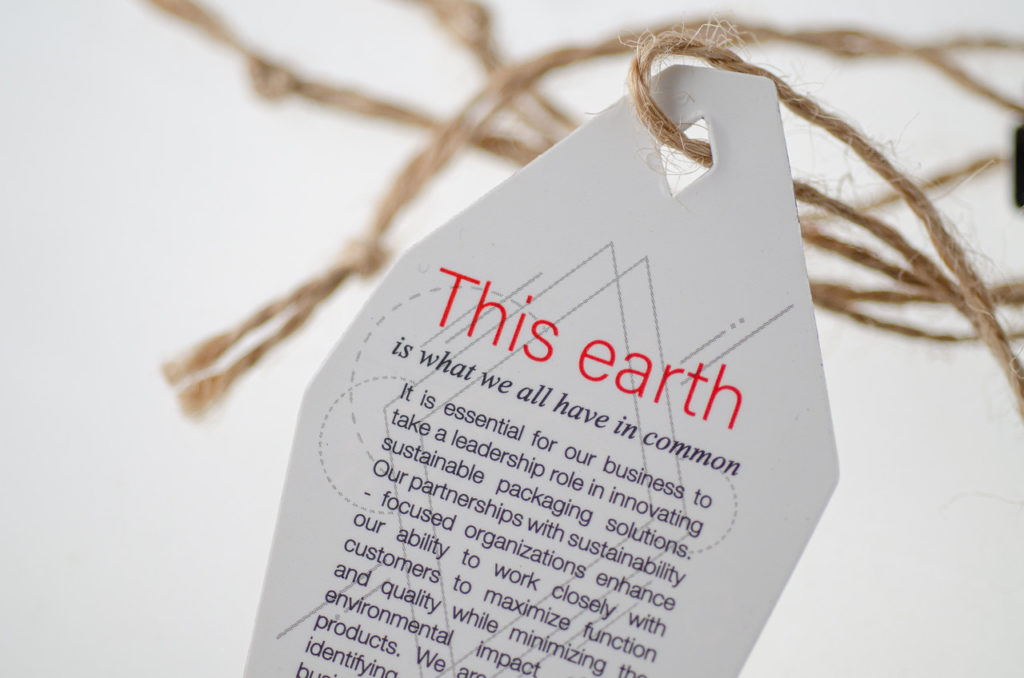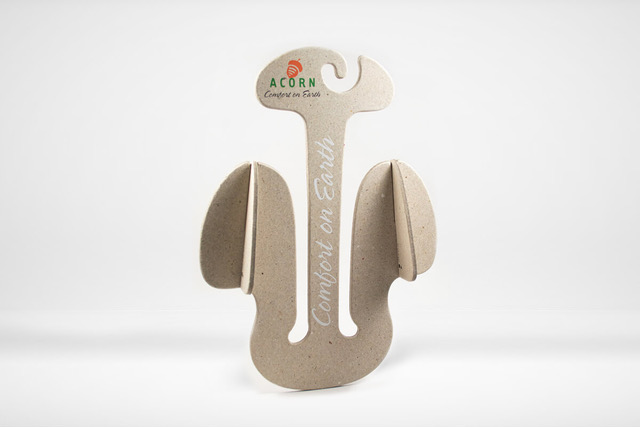
Why Sustainable Products Should Have Equally Eco Packaging
The environmental impact of a garment extends beyond its manufacturing to include how it’s transported and retailed. And one piece of this carbon footprint is packaging.
Nexgen Packaging is mindful of its sustainability footprint. In service of this, it has been developing innovations that use recycled materials, FSC certified paper, and wood paper alternatives like hemp and coffee. The 15-year-old company works with equally eco-minded clients such as Madewell, Eileen Fisher, Nordstrom, American Eagle and more to create hangtags, mailing envelopes, cloth labels and more.

One of Nexgen’s recent clients was TENCEL™. We tapped the firm to develop branded packaging materials for our newly introduced matte TENCEL™ fibers. And Nexgen took the low-impact story of the lyocell fibers and made fittingly eco-friendly solutions.
Carved in Blue caught up with Kent Pellegrini, chief business development officer at Nexgen, to discuss the company’s work on matte TENCEL™ and the trends in denim labeling and packaging.
Carved in Blue: Why is packaging design crucial for product launches, including B2B rollouts?
Kent: With the shift in purchasing behavior, branding and packaging have never been so critical. Showing a brand’s value through packaging is a powerful communication opportunity. The addition of a sustainable story shows a brand’s commitment to their customers and the planet.

Carved in Blue: What was the concept for the branded packaging of matte TENCEL™?
Kent: Immediately we knew “green packaging” was the best approach to visually embody the efforts Lenzing has made and continues to make in this space. There are several sustainable paths a brand can explore, and we chose materials aligning with the TENCEL™ brand ethos.
Carved in Blue: How did you communicate the benefits of matte TENCEL™ via your packaging solutions? What types of packaging did you create for this new fiber?
Kent: We used responsibly sourced paper, string, as well as “eco-sizing” the product. Eco-sizing is a process of determining the maximum yield on the printing sheet, making as many tags as possible while minimizing waste. As well as celebrating the fiber with a subtle palette of nature.

Carved in Blue: For denim in particular, what trends are you seeing in labeling and packaging?
Kent: Less packaging with more impact through design and the use of sustainable, responsibly sourced materials. Brick-and-mortar is rethinking how denim is displayed. Rather than traditional hangers for jeans, some are utilizing simple hooks that hang the denim by belt loops. In instances where hangers are needed, we are providing our Ditto sustainable fiberboard hangers that give the brand the ability to communicate their message on the hanger.

Carved in Blue: As shopping becomes more digital, how can companies—from raw materials to retail brands—prepare themselves for more direct-to-consumer business?
Kent: Omnichannel readiness is key: using RFID, supply chain transparency as well as data analytics, while continuing to use responsibly sourced materials specifically designed for the digital consumer.

Carved in Blue: What is the environmental impact of labels, boxes and polybags? How is Nexgen working to make its branding materials more sustainable?
Kent: Minimizing the impact of all of our products and services has been part of our vision since we founded Nexgen Packaging in 2006. Our focus is sourcing raw materials and manufacturing apparel packaging using only certified renewable, recycled and/or recyclable material while reducing the carbon footprint by manufacturing in the countries where garments are being produced whenever possible.
Nexgen’s mission is to drive sustainability throughout the global apparel, retail, footwear and home supply chain by integrating sustainability in the overall product design, development and sourcing strategy.

Carved in Blue: What does Carved in Blue mean to you?
Kent: Carved in Blue is a way of looking at the industry and not always doing what is easy but doing what is right for our customers and the environment. Sustainability only works if everyone in the supply chain is willing to work toward common goals of reducing the industry’s impact on the environment. Platforms like Carved in Blue are critical in achieving these goals.






